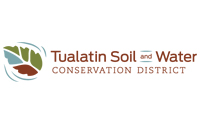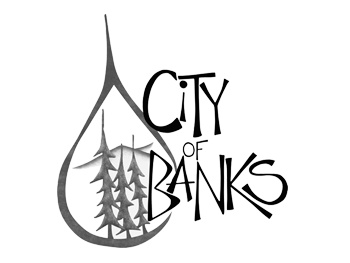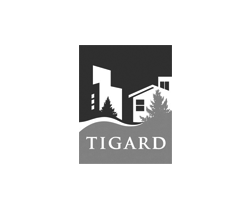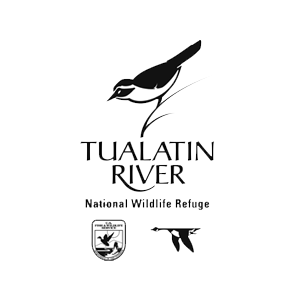Stitching Together a Contiguous Corridor Along an Urban Creek
Four-mile long Glencoe Creek originates in an industrial area of north Hillsboro. It travels past high tech manufacturers, the city’s public works yard and Hillsboro Airport before entering a residential area. Here, Glencoe Creek flows near four public schools, three homeowners associations, two public parks, designated nature preserves and a web of trails spanning public and private lands.
This small stream, a tributary of McKay Creek, is an important resource for fish, wildlife, plants and people. Like many urban creeks, it has experienced a slow degradation of ecological conditions. Over the years, at various spots along Glencoe Creek, concerned individuals and organizations have made a number of ecological enhancements to help improve habitat for birds and other wildlife. These efforts — mostly involving planting native shrubs — did not completely remedy the problem. A more coordinated plan was needed.
In 2019, a team of Tree for All partners began to address the challenge at a larger scale, with a plan that promised to bring lasting results. Today, the project includes almost three miles of the creek and its tributaries — and still more opportunities exist for private landowners to get involved.
The Site
First planting: 2019
Size: 68 acres
Stream length: 2.8 miles
Plant communities: Shrub Scrub Wetland, Forested Wetland, Riparian Forest
The Challenge
Uninterrupted corridors of ecological enhancement give native plants a better chance of survival, and provide more room for the free movement of birds, small mammals and other wildlife along the creek. As of early 2019, however, this project included only the portions of Glencoe Creek and its tributaries owned by the City of Hillsboro, Hillsboro School District and Jackson School Homeowners Association.
To strengthen the project’s effectiveness, partners began to reach out to private landowners, whose properties provide crucial links in the connectivity of the project area. Partners seek contiguous stretches of creekside properties whose owners are willing to sign access agreements and become part of the larger project. Owners of these private parcels are offered free site assessments, invasive species removal, planting of native species and plant monitoring. By working with clusters of properties, partners seek to enlarge the project while keeping its boundaries ecologically sound.
As new parcels join the project, new stakeholders, histories and constraints come into play. Although this mosaic of land ownership makes the project more complex, it also multiplies its expected positive impact. Past ecological uplift efforts along Glencoe Creek have had limited lasting effect, in part because they spanned relatively small and isolated portions of the stream.
Plants such as Himalayan blackberry and reed canary grass pose a great challenge along Glencoe Creek. These invasive species have crowded out native plants, greatly reducing the creek’s ability to offer habitat to fish, birds and wildlife, as well as aesthetic pleasure to neighbors and visitors.
Underground utilities are another challenge. Although this project will not require much construction or heavy equipment, partners will need to work around the sanitary sewer lines that run parallel to the creek.
Finally, as wildlife returns, it will be particularly important to monitor and guide beaver activity. Partners will use techniques learned on other projects to support beavers’ powerful contributions to ecological health, while minimizing negative effects on infrastructure.
The Transformation
Since 2018, four Tree for All partners — Friends of Trees, Tualatin Soil and Water Conservation District, the City of Hillsboro and Clean Water Services — have joined forces to restore Glencoe Creek, in collaboration with nearby schools, homeowners associations and individual residents. This broad approach promises to bring lasting results.
One of the most exciting elements of this collaboration is that Glencoe Creek will be among the Conservation District’s first urban projects. Also distinctive is the opportunity that certain private property owners have to expand the scope of the project. The greater the area of watershed restored, the less habitat fragmentation there will be.
The creek’s restoration began in 2019 with site preparation and invasive plant removal. A revegetation program followed. To date, more than 97,500 carefully chosen native trees and shrubs have been planted. Ongoing monitoring and maintenance will ensure that the landscape thrives and partners’ long-term goals for the site are met, including:
Enhancing wildlife habitat
Filtering stormwater runoff before it reaches the creek
Create shade to keep water cool, improving water quality and saving ratepayer dollars
Increased opportunities for residents to help with the restoration effort and deepen their connections with the creek
In this era of rapid urbanization and concerning weather trends, everyone involved in the project is looking forward to a healthier, more resilient Glencoe Creek corridor.












































